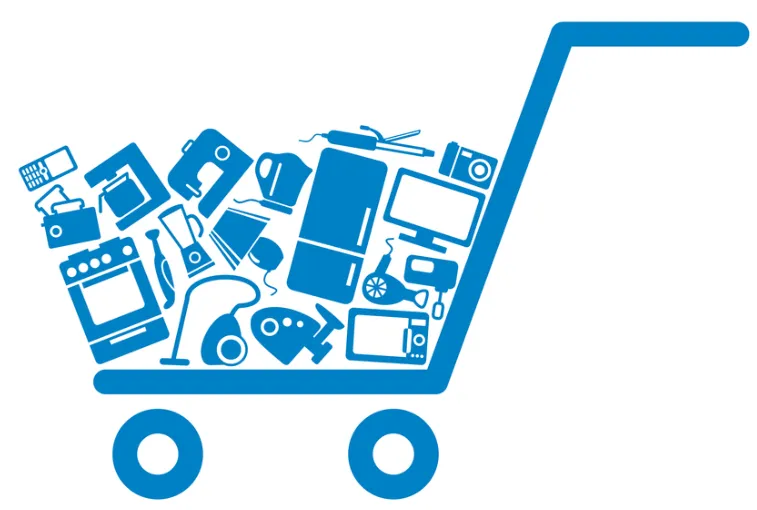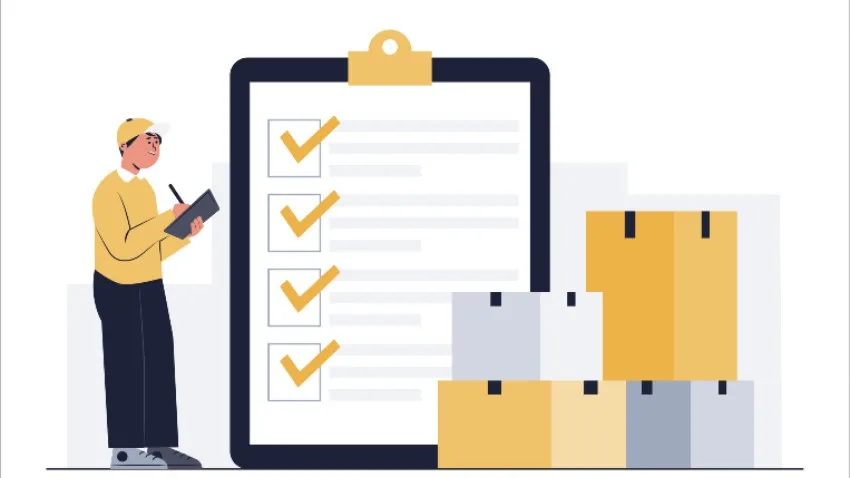The 4 Types of Purchasing: A Strategic & Tactical Guide for Modern Procurement

Ask "what are the four types of purchasing?" and you'll often get one of two answers: a list of procurement categories or a list of purchase order types. The truth is, to master procurement, you need to understand both.
Purchasing isn't a single act; it's a dual-layered function. The strategic layer (whatyou are buying and why) determines your approach to suppliers and risk. The tactical layer (howyou execute the buy) determines your operational efficiency and control.
This guide will dissect both layers, explaining the four strategic types of procurement and the four types of purchase orders used to action them. By the end, you'll know not just what they are, but how to strategically pair them to save money, reduce risk, and streamline your operations.

Key Takeaways:
Procurement strategy is split into four core types: Direct, Indirect, Services, and Capital.
Procurement execution is managed through four primary purchase orders: Standard, Planned, Blanket, and Contract.
Aligning the correct PO type with your procurement strategy is the key to operational excellence.
Indirect Procurement and Services Procurement are prime targets for cost-saving and process automation.
Capital Procurement requires a unique, rigorous process beyond standard POs.
Before we list the types, we must clarify a critical distinction.
Procurement is the comprehensive, end-to-end strategic process of acquiring goods and services needed for an organization to operate and grow. It encompasses identifying needs, sourcing suppliers, negotiating contracts, managing relationships, and ensuring value. It's a management function.
A Purchase Order (PO) is a specific tactical tool withinthe procurement process. It is the formal, legally binding document issued to a supplier to execute a purchase under agreed-upon terms. It's a transactional document.
Think of it this way: Procurement is the entire campaign plan (the strategy), while a Purchase Order is the specific order given to troops to capture a hill (the tactic). You need both to win.
This classification is based on what you're buying and its impact on your business.

What it is: The acquisition of raw materials, components, and goods that are directly incorporated into the products you manufacture and sell.
In-Depth Details:
Impact: Directly correlates to your Cost of Goods Sold (COGS) and gross profit margins. A 10% saving here goes straight to your bottom line.
Management Focus: Heavily reliant on Supply Chain Management (SCM). Key priorities are supplier reliability, quality assurance, volume pricing, and minimizing supply chain disruption risk. Just-In-Time (JIT) inventory models are often used here.
Real-World Example: An automotive manufacturer purchasing steel, engines, and electronic control units (ECUs). A bakery buying flour, sugar, and yeast.
Why it's Unique: This spend is mission-critical. A failure in direct procurement can halt production lines entirely.
What it is: The acquisition of goods and services that support day-to-day operations but are not part of the finished product. Also known as MRO (Maintenance, Repair, and Operations).
In-Depth Details:
Impact: While not directly tied to revenue, inefficiency here destroys profitability through rampant maverick spending and administrative waste.
Management Focus: This category is often fragmented across departments (IT, Facilities, HR). The goal is to consolidate spending, enforce policy, and leverage volume discounts for common items like office supplies or software licenses.
Real-World Example: Laptops for new hires, janitorial services for offices, industrial lubricants for machine maintenance, SaaS subscriptions like Salesforce or Microsoft Office.
Why it's Unique: It's often invisible. A 100overpaymentondirectmaterialsiscaughtimmediately.A100 overpayment on a monthly SaaS subscription can go unnoticed for years.
What it is: The strategic sourcing and management of third-party expertise, labor, and specialized services.
In-Depth Details:
Impact: It's about outcomes and intellectual capital, not physical assets. Managing this well means getting the right expertise at the right time without the overhead of a full-time employee.
Management Focus: The cornerstone is the Service Level Agreement (SLA). Performance is measured against KPIs defined in the SLA, not just the delivery of a physical unit. It requires robust vendor performance management.
Real-World Example: Hiring a management consulting firm (e.g., McKinsey), engaging a digital marketing agency, contracting freelance software developers, or outsourcing legal counsel.
Why it's Unique: The value is intangible and quality is subjective. A poorly written SOW (Statement of Work) or SLA leads to disputes, overbilling, and unsatisfactory results.
What it is: The acquisition of high-value, long-life assets that are capitalized on the balance sheet and depreciated over their useful life.

In-Depth Details:
Impact: This is a capital expenditure (CAPEX) that impacts the company's financial statements for years. Decisions require rigorous financial analysis and high-level approval.
Management Focus: The evaluation is based on Total Cost of Ownership (TCO)—not just purchase price, but installation, maintenance, energy consumption, and disposal costs. ROI calculations are mandatory.
Real-World Example: Purchasing a CNC machine for a factory, buying a company vehicle fleet, constructing a new warehouse, or investing in a massive enterprise server.
Why it's Unique: The process is less about POs and more about a formal Capital Approval Process, often involving RFPs, board approvals, and complex financing or leasing agreements.
Strategic Procurement Types at a Glance
|
Type |
Focus |
Impact |
Key Metric |
|---|---|---|---|
|
Direct |
Raw Materials for Production |
Cost of Goods Sold (COGS) |
Supplier Reliability, Quality |
|
Indirect |
Goods to Run Operations (MRO) |
Operational Efficiency |
Spend Under Management |
|
Services |
Expertise & Labor |
Project Outcomes |
SLA Performance, ROI |
|
Capital |
Long-Term Assets |
Balance Sheet, CAPEX |
Total Cost of Ownership (TCO) |
These are the tools in your procurement toolkit. You choose one based on how much you know about the purchase beforeyou commit.
What it is: The most common, specific, and definitive type of order. Used when all details are known and fixed upfront.
When to Use It: For one-time, immediate purchases where the item, quantity, price, and delivery schedule/ location are 100% certain.
The Professional's Edge: It provides maximum control and minimizes risk for the buyer because everything is specified. However, it's administratively heavy. Using it for repetitive, low-value items is inefficient.
Example: Ordering 500 specific branded circuit boards at $10/unit for a confirmed production run on June 15th.
What it is: A commitment to buy a specific quantity of items at a set price, but with delivery details left undefined for later.
When to Use It: When you know whatyou need and how muchit will cost, but you don't know the exact whenor wherefor delivery.
The Professional's Edge: A PPO is a powerful tool for budget encumbrance. It tells finance you intend to spend $X, so they can reserve the funds. Later, you issue a Schedule Release against the PPO to trigger a specific delivery. This is common in manufacturing for long-lead items.
Example: Committing to buy 10,000 tons of steel at $800/ton for the year. You then issue releases for 2,500 tons to be delivered to the Ohio plant each quarter.
What it is: An agreement with a supplier to provide an unspecified quantity of goods or services over a period, up to a maximum spending limit. Often, even precise pricing is negotiated at the time of release.
When to Use It: For repetitive, low-value purchases where demand is continuous but unpredictable. Perfect for Indirect Procurement (e.g., office supplies, MRO parts).
The Professional's Edge: The BPO is the ultimate tool for efficiency. It pre-approves a supplier and terms, allowing departments to "pull" goods as needed without going through a full PO approval cycle each time. Each purchase is made via a Blanket Release.
Example: Setting up a BPO with Grainger for MRO supplies with a 50,000limit.Amaintenancetechniciancanthencallandordera50 replacement motor under the BPO number without any paperwork.

What it is: This is not a purchase order for goods. It is a master legal framework agreement that establishes the terms and conditions for all future transactions with a supplier.
When to Use It: When establishing a long-term strategic partnership with a key supplier. The CPO itself buys nothing.
The Professional's Edge: All subsequent Standard or Planned POs that reference the CPO number are automatically governed by its negotiated legal and pricing terms. It streamlines the contracting process for repeat business and provides crucial legal protection.
Example: Negotiating a 3-year CPO with a logistics company that includes liability clauses, insurance requirements, and discounted rate schedules. Every time you need to ship something, you issue a Standard PO that says "Under CPO #XYZ," and all master terms apply.
Tactical Purchase Order Types at a Glance
|
PO Type |
Defined Details |
Flexible Details |
Primary Use Case |
|---|---|---|---|
|
Standard PO |
Item, Qty, Price, Delivery |
None |
One-time, specific purchases |
|
Planned PO (PPO) |
Item, Qty, Price |
Delivery Schedule |
Budgeting for known needs |
|
Blanket PO (BPO) |
Supplier, Items, Terms |
Qty, Price, Delivery |
Repetitive, ad-hoc needs |
|
Contract PO (CPO) |
Legal Terms & Conditions |
Everything else |
Establishing master agreements |
This is where theory meets practice. Here’s how a professional procurement team connects strategy to execution.
|
Strategic Need (Procurement Type) |
Recommended Tactical Tool (PO Type) |
Why This Pairing Works |
|---|---|---|
|
Direct Procurement (e.g., Raw Materials) |
Planned Purchase Order (PPO) |
You know the materials and cost for production forecasts but need flexible delivery aligned to the production schedule. Releases are issued just-in-time. |
|
Indirect Procurement (e.g., Office Supplies) |
Blanket Purchase Order (BPO) |
Demand is unpredictable but continuous. A BPO empowers employees to get what they need instantly without bureaucratic delay, while controlling total spend. |
|
Services Procurement (e.g., Consulting) |
Contract PO + Standard POs |
The CPO sets the master legal terms. A subsequent Standard PO is used for each project or phase, detailing the specific SOW, deliverables, and payment milestones. |
|
Capital Procurement (e.g., Machinery) |
Often Bypasses Standard POs |
This typically involves a formal RFP process, a negotiated Asset Purchase Agreement, and use of a Project or Capital Request Form, not a standard PO. |
Best Practices for Modern Procurement:
Centralize Indirect Spend: The biggest savings often come from consolidating fragmented indirect spending under managed BPOs and preferred suppliers.
Implement a Procure-to-Pay (P2P) System: Automate the flow from requisition to payment. This enforces policy, eliminates manual PO creation, and provides priceless spend analytics.
Master the SLA: For services procurement, the SLA is your bible. Define KPIs, reporting frequency, and penalties for non-performance with brutal clarity.
Calculate TCO, Not Just Unit Price: Especially for capital and direct procurement. The cheapest option often has the highest long-term cost.
Pitfalls That Destroy Value:
Maverick Spending: Allowing employees to buy outside approved systems and suppliers. This destroys negotiated discounts and creates compliance nightmares.
Using a Standard PO for Everything: This is the hallmark of an immature procurement function. It creates immense administrative waste for low-value items.
Neglecting Supplier Relationship Management (SRM): Your key suppliers are strategic partners. Manage them accordingly with performance reviews and joint business planning.
Poor Contract Management: Signing a CPO and then filing it away. Regularly review contracts to ensure compliance and identify renegotiation opportunities.
Understanding that "purchasing" has two layers—strategic procurement types and tactical purchase orders—is what separates a professional buyer from an order-placer.
The goal is to move beyond simply knowing the four types of each. It's about intentionally matching your strategic intent with the most efficient tactical tool. Use PPOs to manage your production inventory, BPOs to empower your employees and control indirect spend, and CPOs to build strong, protected supplier partnerships.
By doing so, you transform procurement from a cost center into a powerful engine for efficiency, risk mitigation, and strategic value.
Q1: Which procurement type is most vulnerable to fraud and why?
A: Indirect procurement is often the most vulnerable. Its decentralized nature, high volume of low-value transactions, and maverick spending make it harder to monitor. Fraud can manifest through fake supplier invoices for office supplies or services never rendered, often going unnoticed amidst legitimate expenses.
Q2: Can a single purchase involve multiple types of procurement?
A: Absolutely. Consider building a new factory. The construction itself is Capital Procurement. The raw materials for the products made inside are Direct Procurement. The laptops for the new offices are Indirect Procurement, and the architects hired are Services Procurement. A major project often requires managing all types simultaneously.
Q3: How do global supply chains impact the choice of PO type?
A: They heavily influence it. For long-lead, internationally-sourced direct materials, a Planned PO (PPO) is essential to secure capacity and pricing, with releases managing the complex logistics. The risk of delays and customs issues often makes a firm Standard PO with a single delivery date too risky.
Q4: Is a Blanket PO the same as having a corporate credit card with a vendor?
A: Not exactly. They serve a similar purpose for decentralized spending, but a Blanket PO offers superior control. It mandates pre-negotiated terms and prices and sets a hard financial cap. A credit card has a limit but lacks the contractual pricing and terms, making spend analysis and control more difficult after the fact.
Q5: Who typically has the authority to approve a Contract PO versus a Standard PO?
A: Approval authority is tiered. A Contract PO, which sets long-term legal and financial commitments, almost always requires legal review and approval from senior leadership like a Director of Procurement or CFO. A Standard PO against an existing contract may only require a department manager's approval, as the major terms are already settled.
Q6: What happens if a supplier doesn't meet the terms of a Service Level Agreement (SLA) in a services procurement contract?
A: The SLA should explicitly outline remedies. This typically involves financial penalties, often called "service credits," which are deducted from the invoice. For chronic underperformance, the contract should include clauses that allow for termination for cause, protecting the buyer from being locked into a dysfunctional relationship.
Q7: For a startup, which procurement type should be formalized first?
A: Focus on Indirect Procurement first. Early-stage startups experience chaotic spending on SaaS tools, marketing agencies, and equipment. Implementing a simple policy and a managed BPO for key areas like software prevents wasteful spending and establishes a culture of financial control before scaling becomes unmanageable.
Q8: How does sustainability/ESG factor into selecting procurement types?
A: It's a strategic layer. For Direct Procurement, it means vetting suppliers for ethical sourcing and environmental practices. For Capital Procurement, it involves evaluating the energy efficiency and lifespan of assets. A strong ESG policy may mean choosing a slightly more expensive supplier that aligns with corporate values, impacting all purchasing decisions.
Q9: What's the role of a Non-PO Purchase and when is it acceptable?
A: A Non-PO purchase, like a petty cash transaction or corporate card spend without a pre-issued PO, is a necessary evil. It's acceptable only for trivial, urgent expenses below a strict monetary threshold (e.g., under $100). However, it requires robust after-the-fact expense reporting and reconciliation to maintain audit trails and prevent abuse.
Q10: How do you measure the success of your procurement strategy beyond cost savings?
A: Key metrics include Supplier Performance (on-time delivery, quality defect rates), Process Efficiency (cycle time from requisition to order, percentage of spend under management), and Risk Mitigation (number of sole-source suppliers, compliance audit results). True success is a balance of cost, efficiency, and resilience.
Contact us
Call Us: +86 193 7668 8822
Email:[email protected]
Add: Building B, No.2, He Er Er Road, Dawangshan Community, Shajing Street, Bao'an District, Shenzhen, China